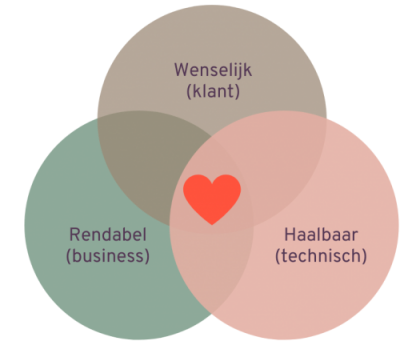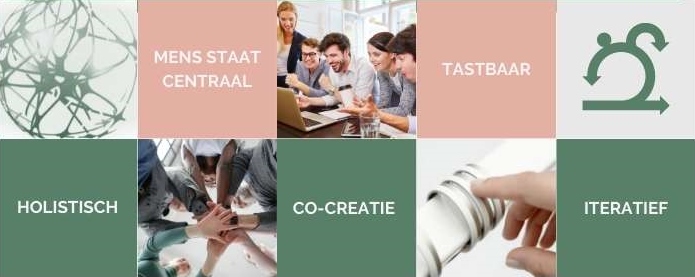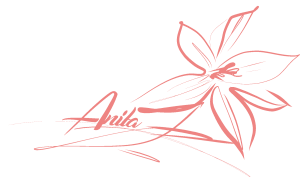Do you also want to be one of the pioneers transforming Human Resources into Human Capital? Then let this article be an inspiration for a fresh start.
Design thinking begins by exploring the needs of the "customer," in the broad sense of the word. When an HR department views employees as 'customers,' design thinking can also be applied to reinventing HR processes so that your organization adapts more readily to changing circumstances. Through the steps below, design thinking offers you guidance. Following these guidelines will lead your organization to greater employee autonomy and engagement.
1. Empathy and observation
Get empathy with your customers/employees. Bring your target groups to life by giving them an identity (persona) and identifying their needs and perceptions. If you have multiple audiences, create multiple personas.
To help you do this, you can put yourself in your persona's life. Map the entire employer journey and make the journey together and find the moments where you as an HR department can make a difference. Go as broadly as possible, from the recruitment and selection process to your exit strategy.
It is important to always keep in mind that this persona is a representation of a target audience and that the question this persona is asking is the one you will ultimately solve in your design process.
2. Define the issue/problem/need
In this phase, the information from phase 1 is analyzed in depth.
Put your persona at the center of defining the need to have the perfect starting point for your innovation journey. Formulate this need as an open-ended question, for example, "how do we ensure that Linda (persona representing the newly hired) has a unique on-boarding experience so she can get started right away?

3. Brainstorm
Brainstorming happens in 2 stages: first divergence, then convergence.
In the divergent phase, it is important to generate as many ideas as possible. Here you mainly use creativity and associative ability. Bad ideas do not exist at this stage, as they can serve as inspiration. Quantity takes precedence over quality.
In the converging phase, you will go from a multitude of ideas to a few that you will develop further. Agree in advance on the number of ideas you wish to keep, taking into account the needs of your different persona.
Select only ideas that strike a good balance between financial, technical/operational feasibility and actually address the need.
4. Prototype
A prototype is a translation of your solution into a simplified model/concept. The goal of this phase is for you to develop a test version that you can present to your target audience. A prototype need not be expensive to develop. It is a temporary thing, which, depending on the complexity of the final product, may not be reused.
The material or the way you prototype it depends on the solution you are going to offer. Keep in mind that it must remain practical and understandable to your target audience.
A good prototype for an answer to an HR question about on-boarding could be a typed-out document outlining the various steps an entry-level employee must go through before becoming actively employed.
While developing a prototype, new ideas may bubble up. That may prompt another brainstorming iteration.
5. Test
The best way to test is to observe how the prototype is perceived. By putting the prototype in the hands of your target audience and having them actively engage with it, you will quickly notice how your idea can be tweaked. Even at this stage, new needs may come to light and known needs become clearer. All this will lead to new iterations until we are certain that the solution offered does indeed meet the employee's needs.
Going back to the on-boarding document as a prototype, we can ask a colleague to carry out the instructions of this document step by step and share his/her findings.
HR use cases
Finally, some practical examples where design thinking can be valuable to revamp or adjust HR processes:
On-boarding process
You start the process from the candidate's point of view. What would help so that the future employee would feel more quickly at home in his new workplace? In doing so, you will focus primarily on the employee's experience rather than the technology. If you want to develop something digital for this purpose, make sure it is a user-friendly app that leads immediately to the solution.
Career Counseling
Many creative ideas can also arise around career development through design thinking. In what ways will you encourage employees to keep learning? For example, you could do this by installing a digital learning platform that gives employees suggestions to take courses and join expert groups.
Success Factors

Employee is central
When we put ourselves in the shoes of the employee, we quickly discover where and why frustrations arise. By observing employees, we can identify their needs. By listening with an open mind and repeatedly asking "why? understand the underlying needs of the employee.
Co-creation
Alone you go faster, in team you go further. To achieve the best solutions, you will work together in multidisciplinary teams, breaking organizational silos. This approach ensures that each issue is approached broadly and from different angles.
Tangible
The observing how employees interact with a tangible prototype is far more instructive than endless discussions of abstract issues.
Iterative
Iterations in your process provide progressive insight and by returning to your steps you achieve better results that are more closely aligned with formulated needs.
Holistic
The focus shifts from the "working" person in the organization to the person as a whole. Your employee also has a private life. His concerns and talents do not disappear at the office door.
Time to embrace design thinking in your organization
Design thinking is becoming more and more prevalent and well established in both manufacturing and service companies to quickly adapt their business processes to changing customer needs. HR also needs to respond quickly to changes in the marketplace.
What makes design thinking so powerful is the human side of the story, and that is exactly the focal point of the new HR organization. So time to integrate these new insights into your story and chart a new course in human resources, or will it be human capital 🙂 .
Inspired by this blog? Then sign up right away To receive more "food for thought" in your mailbox or follow our social media channels.
Fine reading pleasure

